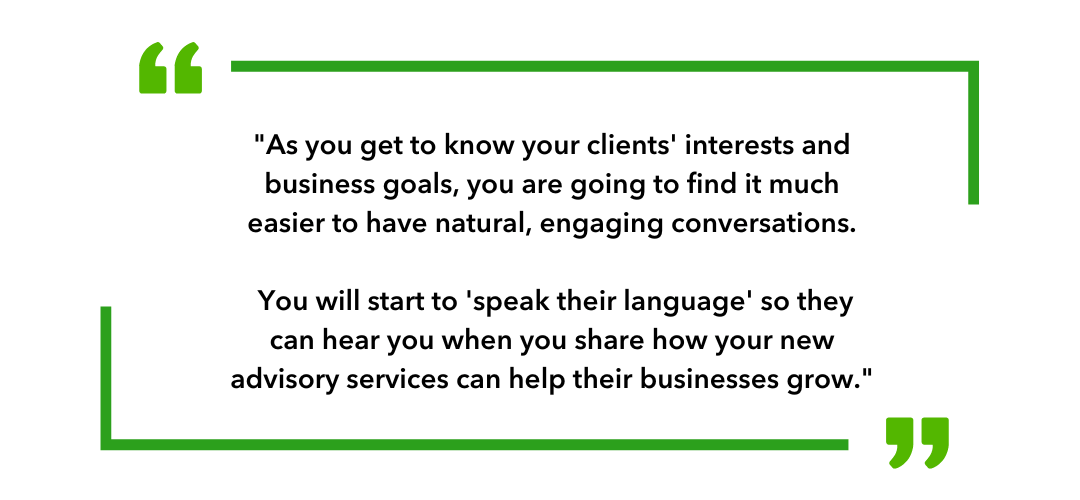Once you’ve identified the business needs among your current clients that could be met by client advisory services, and you’ve assessed the strengths and aptitudes of your team. You’ve done the first step in addressing the “people” part of the people, processes, and technology approach to developing a client advisory services (CAS) practice.
Still working on this part? Read more about assessing your clients and your team to help you identify your firm’s CAS menu.
Now you’re ready to take the next step in offering advisory services, but how should you engage your first CAS clients?
Every client is different. You probably have clients who have a firm grasp on financial statements and cash flow management. They may already know how to leverage their balance sheet to meet the needs of their business and market. Other business owners run their organisations based solely on gut instinct—and couldn’t tell the difference between a P&L statement and a tablet of ancient Egyptian hieroglyphics.
Yet both clients need an advisor to provide objective, expert advice about their finances and operations. That’s where you come in.





















